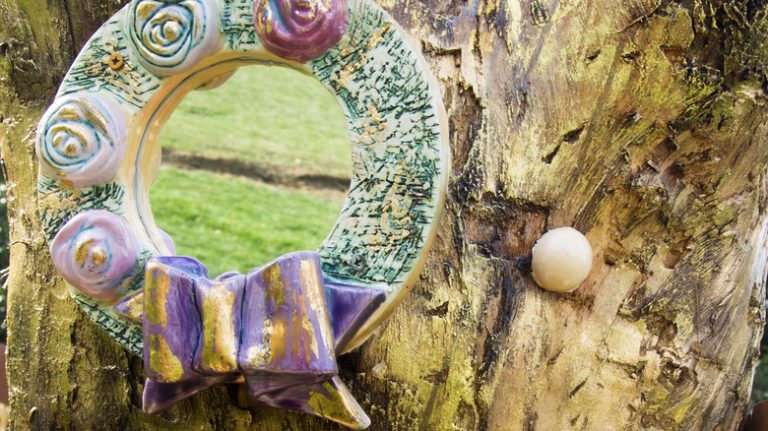Japanese maples are renowned for their stunning beauty and graceful growth. They are a favorite among gardeners and landscaping enthusiasts worldwide. However, to ensure the success and growth of these majestic trees, they often need to be pruned.
There are several reasons why Japanese maples should be pruned. One of the main reasons is to remove any dead or diseased branches, which can inhibit the tree’s health and vigor. Additionally, pruning helps to thin out the branches, allowing for better air circulation and reducing the risk of fungal diseases. Moreover, by selectively removing certain branches, the tree’s aesthetic appeal can be enhanced, revealing its unique form and structure.
Pruning Japanese maples can be done vigorously, but timing is key. It is generally recommended to prune them anytime between late winter and early spring, while the tree is still dormant. This timing allows for the trimming of branches without causing any harm to the tree. It is also advantageous to prune before the first flushes of new leaves appear, as this will promote healthy and even growth.
When it comes to the actual pruning process, there is a trick that Joshua frost, the owner of a well-known Japanese maple nursery, recommends. He suggests starting by removing any dead or damaged branches, followed by thinning out branches that are crossing each other. This opens up the tree and allows light to reach the interior. Additionally, if any branches are growing too close to the ground or in an undesirable direction, they can be shortened or removed entirely. However, it is important to prune with care and not overdo it, as excessive pruning can harm the tree.
Different Japanese maple varieties require different pruning techniques. For laceleaf Japanese maples, it is best to remove any branches that are rubbing against each other, as well as any branches that are growing too upright. For weeping Japanese maples, pruning can be done to reduce the overall size and encourage a more compact habit. Furthermore, multi-stemmed Japanese maples should be pruned to showcase the distinct form of each individual trunk.
In conclusion, pruning Japanese maples is an art that requires timing, skill, and an understanding of the tree’s nature. When done correctly, it can enhance their natural beauty and grace. Nevertheless, it is always best to trust a professional pruner or follow expert advice, especially if you are an inexperienced gardener. Remember, less is often more when it comes to pruning, and it is better to err on the side of caution than to risk harming your beloved Japanese maple.
Pruning Japanese Maples
Pruning Japanese maples is an important aspect of their care and maintenance. As a gardener, it is crucial to know how and when to prune these trees in order to promote their health and aesthetic appeal.
One key point to remember is that pruning should only be done when necessary. It is important to know the reasons for pruning, such as removing dead or diseased branches, reducing overall size, or shaping the tree for a desired look. Pruning dead or diseased branches helps the tree to conserve energy and focus its resources on healthy growth.
When pruning Japanese maples, it is best to do so in early spring, before new growth emerges. This allows the tree to recover quickly and minimizes the risk of frost damage. It is also important to be careful not to prune too much, as this can cause the tree to produce vigorous new growth that may be more susceptible to winter damage.
Pruning tools should always be sharp and clean, as dull or dirty tools can damage the tree and increase the risk of infection. It is recommended to use clean pruning shears or a saw to make clean cuts, starting from the base of the branch and angling the cut slightly away from the tree. This allows for better healing and prevents water from pooling against the trunk, which can lead to rot.
There are different pruning techniques that can be used depending on the desired outcome. For example, the removal of crossing or crowded branches can help improve the tree’s overall structure. Thinning out the canopy of the tree allows for better air circulation and light penetration, promoting healthy growth.
In some cases, pruning may be necessary to maintain the desired size and shape of the tree. This can be done by selectively removing branches that grow upright or in undesirable directions. Care should be taken to maintain the natural form of the tree, as pruning too much or too often can lead to stress and potential damage.
It is important to note that not all Japanese maples require pruning. Some cultivars naturally have a more compact and layered growth habit, while others may have a more upright or cascading form. Understanding the specific growth habit of your tree and pruning accordingly will help to maintain its natural beauty.
While there are many resources available, such as books and online videos, that can provide guidance on pruning Japanese maples, it is always best to consult with a local expert or experienced gardener who is familiar with the specific needs of your tree. They can provide guidance on when and how to prune, as well as offer tips and techniques for maintaining a healthy and aesthetically pleasing tree.
In conclusion, pruning Japanese maples is an essential part of their care and maintenance. By understanding the reasons for pruning and the specific needs of your tree, you can ensure its health and enhance its natural beauty.
The right cuts reveal a branch pattern that looks good with leaves or without
When it comes to aesthetic pruning of Japanese Maples, making the right cuts is essential. Aesthetic pruning aims to enhance the natural beauty of the tree by revealing a branch pattern that looks good with leaves or without.
First and foremost, it is important to have sharp, pruned tools. A sharp tool ensures clean cuts, minimizing damage to the tree. It is recommended to prune Japanese Maples during the dormant season, when they are not actively growing. This allows the tree to heal and recover properly.
To start the pruning process, you need to know your tree and its growth habit. Japanese Maples come in various forms, including upright, weeping, and ball-like. Understanding the growth habit will help you determine which branches need to be removed or trimmed.
When pruning, it is important to remove dead or diseased branches. These branches not only detract from the overall aesthetic appeal of the tree but also consume valuable energy that could be used for healthy growth and leaf flushes. Removing them will promote better health and appearance.
Timing is another important factor to consider when pruning Japanese Maples. Pruning should be done in late winter or early spring, just before new growth begins. This ensures that the tree has enough time to heal any wounds before the growing season starts. Additionally, pruning in late winter or early spring helps to minimize the risk of frost damage to new growth.
When making cuts, it is recommended to prune just above a healthy branch or bud. This encourages new growth to grow in the desired direction and helps maintain the tree’s natural form. Avoid making cuts too close to the trunk, as this can create bigger wounds and slow down the healing process.
Care should be taken to avoid over-pruning. While it can be tempting to remove a large number of branches, it is important to trust the tree’s natural branching pattern and not remove too much. Over-pruning can result in excessive sunlight exposure to the trunk and branches, which can be detrimental to the tree’s overall health.
MrMaple, a Japanese Maple specialist, encourages the concept of “pruning away from” rather than “pruning to.” This means removing branches that are crossing or rubbing against each other, rather than targeting specific branches to be pruned. This method maintains the tree’s natural form and creates a more harmonious aesthetic.
Overall, aesthetic pruning of Japanese Maples can enhance the beauty of these deciduous trees. With the right knowledge and technique, you can reveal a branch pattern that looks good with leaves or without. By making careful and well-timed cuts, you can help the tree maintain its health, form, and energy flow.
| Key Points: |
|---|
| – Use sharp pruned tools for clean cuts |
| – Prune during the dormant season to ensure proper healing |
| – Understand the tree’s growth habit before making cuts |
| – Remove dead or diseased branches for better health and appearance |
| – Prune in late winter or early spring, just before new growth begins |
| – Prune just above a healthy branch or bud |
| – Avoid over-pruning and trust the tree’s natural branching pattern |
| – Prune away branches that are crossing or rubbing against each other |
Timing isn’t everything
When it comes to aesthetic pruning of Japanese maples, timing certainly plays a role, but it isn’t the only factor to consider. While some people may suggest specific times of the year to prune, it’s important to understand that each tree is unique and may have differing needs.
Some trees have a more branching structure, while others may have more pass-throughs or open spaces. The type of pruning that a particular tree needs will depend on its specific characteristics. Without understanding how a tree will respond to pruning, it’s hard to determine the best time to do so.
Pruning can be done at any time of the year, but there are certain times when it may be easier to enhance the overall appearance of the tree. For example, pruning in March can help promote new flushes of growth and keep the tree looking fresh throughout the growing season.
Japanese maples are known for their intricate beauty, with leaves that look like delicate works of art. Pruning can be a way to enhance this beauty by shaping the branches and tips. However, it’s important to use the right tools and techniques to avoid damaging the tree.
There are different forms of Japanese maple trees, and each may require different pruning techniques. Some forms, like weeping maples, may need more cutting back to maintain their health and fine appearance. Others may only need minimal pruning to keep them looking good.
Timing isn’t the only consideration when it comes to pruning Japanese maples. It’s also important to understand what the tree needs and how it will respond to pruning. By taking the time to assess the tree’s growth and health, you can determine the best time and methods for pruning.
One point that should be taken into account is the risk of frost. Pruning too early in the year can leave branches susceptible to dying back if there is a late frost. On the other hand, waiting too long to prune can result in bigger cuts that take longer to heal.
So, timing is just one factor to consider when it comes to pruning Japanese maples. It’s important to look at the overall health and appearance of the tree, as well as the specific needs of its form. With the right tools and techniques, and the knowledge of when and how to prune, success can be achieved at any time of the year.



